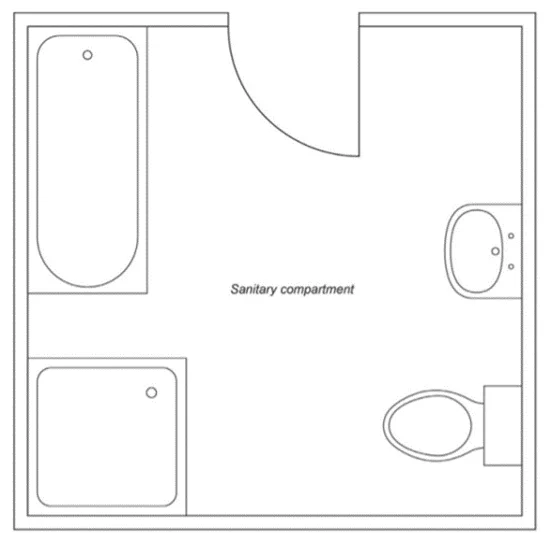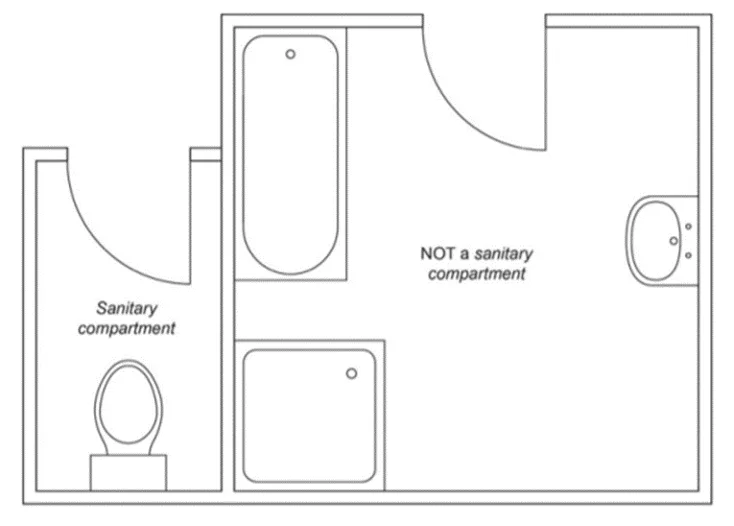What is a Sanitary Compartment according to BCA
by Elizabeth Greenwood
How is it different from a wet area and why do we need to know the difference?
The BCA has different requirements for a wet area when it is a sanitary compartment. But what makes a wet area a sanitary compartment?
Wet areas according to BCA
A wet area is an area with water supplied that does not involve food preparation. This includes bathrooms, laundries, showers, and sanitary compartments but not kitchens, bars, or other food preparation spaces.
What is a sanitary compartment?
Quoting the BCA, a sanitary compartment is defined as
“a room or space containing a closet pan or urinal.”
Water closets, bathrooms, and restrooms are considered sanitary compartments, but only when a closet pan (aka a toilet) or urinal is in that room.
The figure below shows a bathroom with a toilet in the room, which is a sanitary compartment.

However, in the following set up the toilet is in a separate enclosed space to the bathroom, in which case the bathroom itself is not a sanitary compartment, but the water closet with the toilet is.

Why is this difference important?
The BCA defines specific requirements for sanitary compartments, including what rooms are allowed to be adjacent, the type of lighting, sound proofing, ventilation, and the kind of door the room requires.
You wouldn’t want a toilet leading directly into your kitchen, nor would you want to ventilate your toilet through your bedroom. The NCC highlights all the requirements for the design of a sanitary compartment within commercial or residential settings (volume 1 and 2 respectively).
As a safety precaution, the BCA requires the ability for an unconscious person to be removed from a fully enclosed sanitary compartment. This involves accounting for space and accessibility to the room which leaves certain requirements for the door to a sanitary compartment.
When there isn’t 1.2m of free space for the door’s span or a gap large enough for access, the door must either
- open outwards,
- be a sliding door, or
- have hinges that allow the door to be removed from the outside.
For more information on the requirements for designing a sanitary compartment, be sure to check the NCC for all the details.
References
Australian Building Codes Board. (2019). National Construction Code. Canberra: Australian Building Codes Board. Retrieved from https://ncc.abcb.gov.au/editions-national-construction-code
